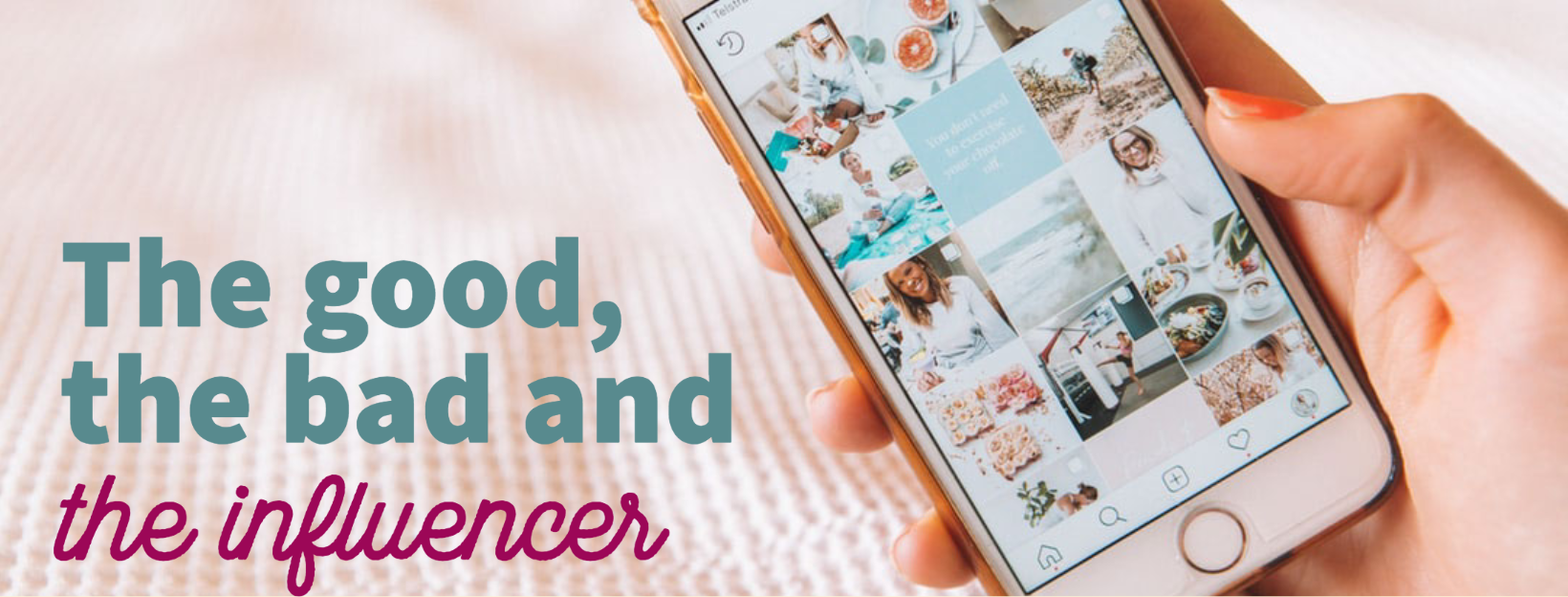The good, the bad and the influencer

Influencers don’t fit a specific mold or category. They appear across almost every social platform and range from your 12-year-old cousin’s favorite beauty guru to your mom’s favorite HGTV-esque blogger. Only about 30% of the time do they offer anything other than a chance for you to get the luxury of peeking into their everyday lives — and we happily oblige. While we could write a thesis on all of the facets of influencership, we’ll focus today on how influencers vary from, and leverage, different social media platforms. We’ll focus on the most popular: YouTube, Twitter and Instagram.
YouTube
YouTube is dominated by a younger demographic, with more than 80% of people between 15 and 25 using YouTube. Because YouTube is a video-based platform and influencers are asking followers to engage for 10 to 15 minutes, it could be said that YouTubers work harder than most influencers. It simply takes more time to script and create a believably “organic” video than it does to post a picture of your new shoes with a swipe-up link. What does this mean for brands? If you want an exclusive promotion in a YouTube video, it will cost you a lot more than free product. We’ll use an interesting influencer subset on the platform as an example – the makeup kings and queens, often referred to as the “beauty community.” Their videos consist of content from makeup tutorials to product reviews and challenges. But if you want your product to be the star of the video, it could cost tens of thousands of dollars. However, YouTubers have some of the most passionate fan bases, meaning their sway will have a larger significance than most.
Twitter influencers are often the most neglected breed of this fascinating species. Because Twitter doesn’t rely on media (photography, videos, etc.) as heavily as other platforms, companies like Fit Tummy Tea aren’t going to seek out a blue check mark to craft a witty comment for their brand. Twitter influencers seemingly have the least to offer to brands or other entities seeking out advertising and exposure. However, they offer a refreshingly “real” presence that churns out funny content for interested parties and requires nothing in return. Realistically, Twitter influencers aren’t the best way to test out influencer marketing, especially if you’re new to the game. But it isn’t a bad idea to still monitor what these individuals are tweeting about; you could spot your brand name among the trending topics of the day and find your way into an “influenced” audience that isn’t usually getting targeted.
If you’ve heard someone use the term influencer in a casual conversation, Instagram influencers are most likely who they were referring to. Instagram influencers are the apple pie of social media stardom ‒ they’re classic, a staple, (some might say “basic”), but you can’t deny their effectiveness. Instagram is home to the upcoming fashionistas, the mommy bloggers drenched in farmhouse decor and the 17-year-old with great hair who is probably missing school too much. Instagram influencers’ audiences are broader. Not everyone following a fashion blogger is looking for wardrobe tips; they could be following said blogger for their personality, because a friend recommended them or simply out of morbid curiosity and the need for a good laugh. Instagram is the influencer capital of the world, therefore this space is probably your best bet as a brand. The demand for aesthetically pleasing photos and stories make posts hard to miss, and the incessant hashtagging makes them easy to find. Additionally, Instagram influencer content typically isn’t as niche as someone like a blogger. This means it’ll be a lot easier to integrate your brand into the post of an internet star than into a post by someone who is dedicated to weekly blogs about their plant-based diet.
A lot of brands may be able to buy an influencer’s time in hopes of getting them to promote something on air or through a photo. However some influencers, particularly those with a smaller following, may be just as happy to trade their promotion for a free product or service. Remember, don’t get caught up in the number of followers an influencer has. It’s about their following. A “micro” influencer with 4,000 followers who respect them will have much more of an impact than the Instagrammer with 10 million followers gained from being acquaintances with a pop star. Influencer marketing is more than just a trend; it’s a new way of life. Just like life before Facebook or Twitter seems like a distant dream, an influencers’ product promotion being five times more effective than a 30-second television spot is going to feel the same way. The bottom line is this: Influencers are worth it. What do you have to lose?


